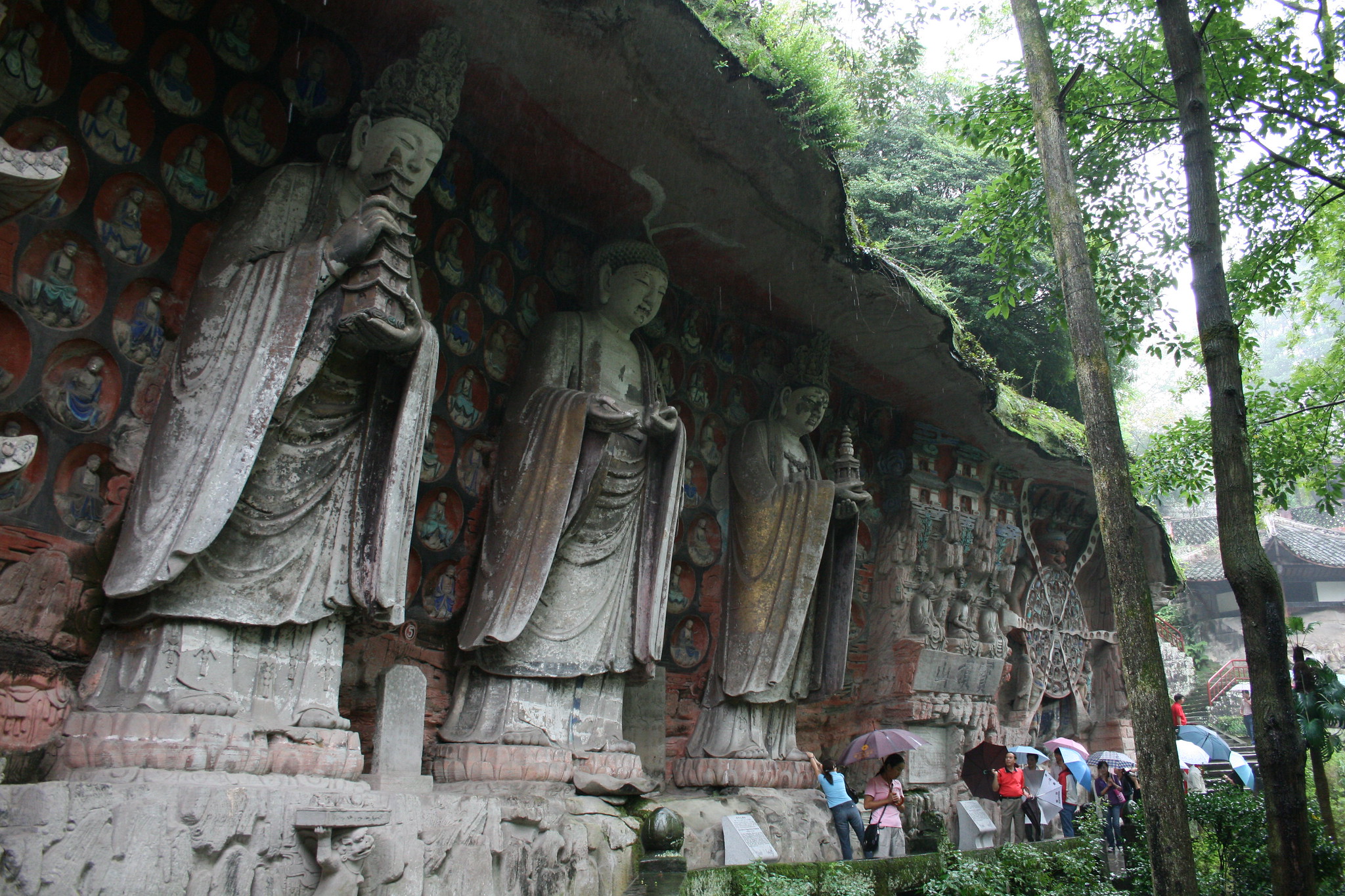The Dazu Rock Carvings are a series of religious sculptures and carvings located in Dazu County, Chongqing, China. Created between the 7th and 13th centuries, these intricate works of art are considered masterpieces of Chinese Buddhist art and were designated a UNESCO World Heritage Site in 1999. The carvings, which number over 50,000 individual figures, are spread across several sites and depict Buddhist, Confucian, and Taoist themes. The most famous site, Baodingshan, features a unique narrative style that combines text and images to tell religious stories. The Dazu Rock Carvings are renowned for their high artistic quality, rich diversity of subject matter, and their well-preserved state, offering valuable insights into the religious, social, and artistic life of ancient China.
Nestled in the lush green hills of Chongqing, China, lies a hidden gem that has captivated visitors for centuries. The Dazu Rock Carvings, a UNESCO World Heritage Site, offer a fascinating glimpse into the artistic and spiritual legacy of ancient China. These intricate stone sculptures, dating back to the 7th century, have weathered the test of time and continue to mesmerize tourists and scholars alike with their beauty and historical significance.
As you approach the site, the first thing that strikes you is the sheer scale of the carvings. Spread across several locations in Dazu County, the most famous being Baoding Mountain, these rock art treasures cover an impressive area of over 100 square kilometers. It’s a testament to the dedication and skill of the artisans who spent generations perfecting their craft, leaving behind a legacy that continues to inspire awe in modern times.
What sets the Dazu Rock Carvings apart from other ancient Chinese art is their unique blend of Buddhist, Confucian, and Taoist influences. This harmonious integration of different philosophical and religious traditions reflects the cultural diversity of medieval China and offers visitors a comprehensive view of the spiritual landscape of the time. As you wander through the site, you’ll encounter depictions of Buddhist deities, Confucian moral teachings, and Taoist cosmic principles, all seamlessly woven together in stone.
The level of detail in these carvings is truly astounding. From the delicate facial expressions of the figures to the intricate patterns adorning their clothing, every element has been crafted with meticulous care. It’s not uncommon to see visitors spending hours examining a single carving, marveling at the skill and patience required to create such masterpieces with primitive tools.
One of the most famous scenes at the Dazu Rock Carvings is the Thousand-Hand Bodhisattva, a breathtaking representation of the Buddhist deity Avalokitesvara. This massive carving features a central figure surrounded by countless arms, each holding a different object symbolizing the deity’s ability to help all sentient beings. The sheer complexity of this piece is mind-boggling, and it’s no wonder that it has become an iconic image associated with the site.
But the Dazu Rock Carvings aren’t just about religious iconography. Many of the scenes depict everyday life in ancient China, offering a unique window into the past. You’ll find carvings showing farmers tending their fields, merchants haggling in marketplaces, and even children at play. These slice-of-life depictions provide valuable insights into the social and economic conditions of the time, making the site a treasure trove for historians and anthropologists.
As you explore the Dazu Rock Carvings, it’s impossible not to be struck by the sense of continuity they represent. Despite the passage of over a thousand years, these ancient artworks continue to speak to us, bridging the gap between past and present. It’s a humbling experience to stand before these carvings and realize that you’re part of a long line of admirers stretching back through the centuries.
In recent years, efforts have been made to preserve and protect these invaluable cultural relics. Conservation teams work tirelessly to combat the effects of weathering and erosion, ensuring that future generations will be able to appreciate the Dazu Rock Carvings in all their glory. Additionally, improved infrastructure and visitor facilities have made the site more accessible to tourists, allowing more people to experience this remarkable piece of Chinese heritage.
As you leave the Dazu Rock Carvings, you can’t help but feel a sense of wonder and appreciation for the artisans who created these masterpieces. Their legacy lives on in every intricate detail, every graceful curve, and every powerful image carved into the rock face. It’s a reminder of the enduring power of art to transcend time and culture, speaking to us across the centuries and inviting us to explore the rich tapestry of human creativity and spirituality.
The Dazu Rock Carvings represent a pinnacle of Chinese rock art, showcasing exceptional craftsmanship and religious diversity from the 9th to 13th centuries. These intricate sculptures, located in Chongqing, China, blend Buddhist, Confucian, and Taoist influences, reflecting the cultural and spiritual landscape of medieval China. Recognized as a UNESCO World Heritage Site, the carvings offer invaluable insights into the artistic, religious, and social developments of their time. Their preservation and continued study contribute significantly to our understanding of Chinese history and the evolution of religious iconography in East Asia.

